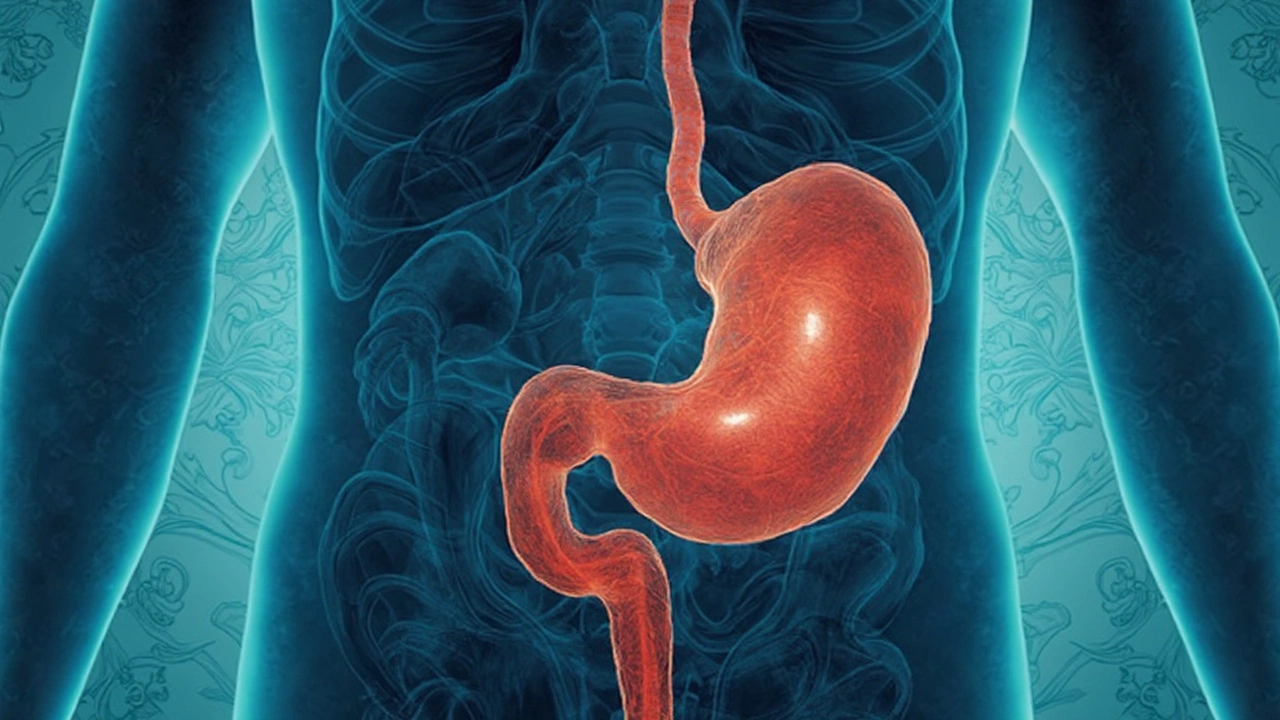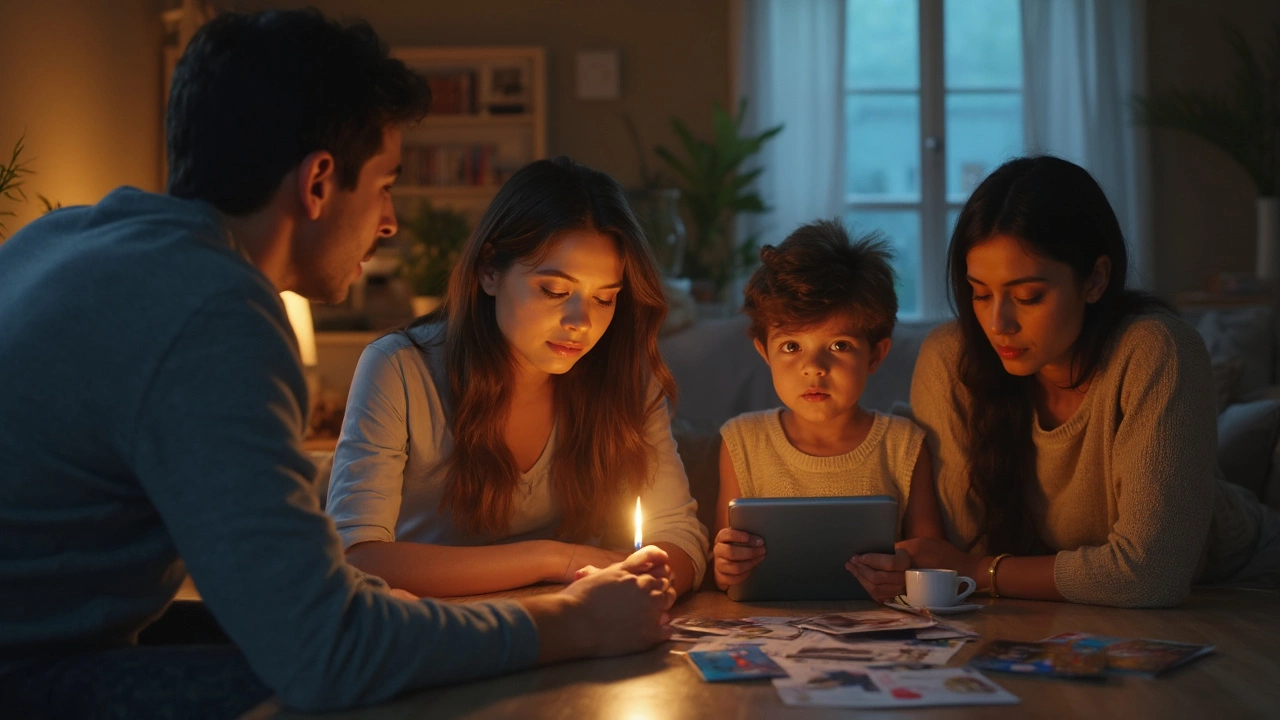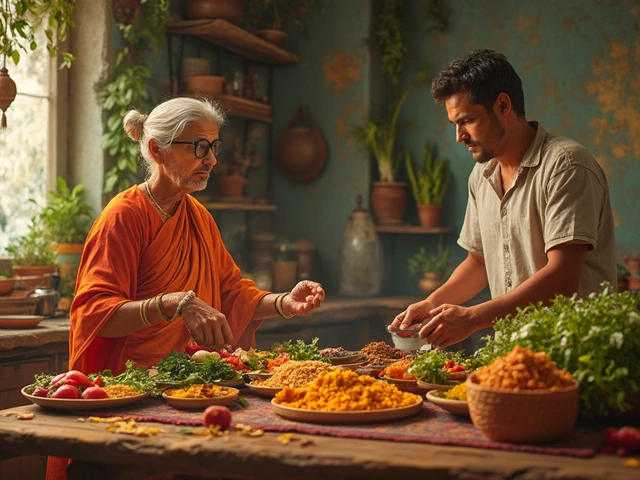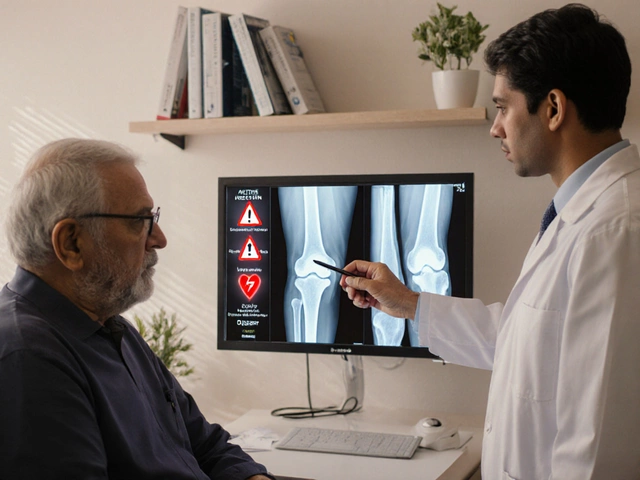If you ask doctors which cancer scares them most, plenty will point to pancreatic cancer without even blinking. Most people barely know where the pancreas is, but this tiny organ causes big trouble. Unlike many other cancers, pancreatic cancer often doesn’t show up on the radar until it’s already dug in deep. By then, options can look pretty grim.
The numbers don’t sugarcoat it—pancreatic cancer has one of the worst survival rates of any cancer. Fewer than 1 in 10 people diagnosed with it today will be alive in five years. That’s a sobering stat. But there are warning signs, risk factors, and even some promising new approaches to treatment surfacing in 2025. The key is knowing what to look for and not ignoring the subtle early hints your body might be sending.
- Why Pancreatic Cancer Tops the List
- Hard to Spot: The Silent Symptoms
- What Makes Treatment So Tough
- Who’s Most at Risk?
- Can You Lower Your Chances?
- Hope on the Horizon: New Treatments
Why Pancreatic Cancer Tops the List
Ask around in the world of cancer treatment and pancreatic cancer almost always makes the "most feared" list. The main reason? It’s a lethal combination of being sneaky, stubborn, and fast-growing. Unlike breast or skin cancer, which often get spotted early thanks to obvious symptoms or screenings, pancreatic cancer flies under the radar. By the time most people notice something’s wrong, the cancer has already spread to other parts of the body.
Stats tell a brutal story. According to numbers published in early 2025, pancreatic cancer is now the third leading cause of cancer-related death worldwide. Even with all the advances in medicine, survival odds haven’t moved much over the years. Here’s a quick table showing how it compares with some other cancers:
| Cancer Type | 5-Year Survival Rate (%) | Typical Age at Diagnosis |
|---|---|---|
| Pancreatic | 12 | 71 |
| Breast | 91 | 62 |
| Colon | 65 | 68 |
| Lung | 23 | 71 |
See that? The 5-year survival rate for pancreatic cancer sits at just 12%. Most people get diagnosed in their early seventies, but age isn’t the only risky thing here.
Why is this cancer so hard to beat? The pancreas is tucked deep inside the belly. Tumors can grow for months with barely any aches or pains. There’s no routine screening test for healthy people like there is for colon or breast cancer, so it often slips through the cracks until it’s really advanced.
Plus, even when doctors do find it, pancreatic tumors like to resist chemotherapy, radiation, and surgery. That’s why doctors and scientists call it an aggressive cancer—it just doesn’t back down easily. The fear isn’t just about how deadly it is, but how quietly it can take over before anyone even knows it’s there.
Hard to Spot: The Silent Symptoms
The trouble with pancreatic cancer is that it’s known as the “silent killer.” It rarely makes a fuss early on, so most people don’t see a doctor until things have gotten pretty serious. When symptoms do pop up, they’re easy to ignore or mistake for something else—like stomach bugs or stress.
Here’s what to watch out for. Even just one of these showing up and not going away could be a reason to talk to your doctor. The key is catching them early, even if they seem mild.
- Yellowing of the skin or eyes (jaundice) — This one’s a big red flag, even if you’re not feeling sick.
- Unexplained weight loss — Dropping pounds without trying is never a good sign.
- Stomach or back pain — It usually gets worse over time and doesn’t respond to basic meds.
- Loss of appetite or feeling full quickly — Meals you used to love now make you feel stuffed or sick.
- Dark urine and pale stools — Not fun to talk about, but if your pee gets dark and your poop is clay-colored, don’t ignore it.
- New onset diabetes — If you don’t have a family history but suddenly develop diabetes, the pancreas could be the reason.
Doctors say the bland, sneaky nature of these symptoms is what makes pancreatic cancer so tough to catch. By the time the classic signs show up, the cancer may have already spread. Let’s take a look at how often these symptoms occur at diagnosis:
| Symptom | % of Patients at Diagnosis |
|---|---|
| Jaundice | 47% |
| Weight Loss | 38% |
| Abdominal/Back Pain | 35% |
| Loss of Appetite | 25% |
| New-onset Diabetes | 15% |
If these symptoms sound vague, that’s because they are—which is exactly why people miss them. Trust your gut. If something feels wrong and doesn’t go away in a couple of weeks, get it checked. No one wants to be paranoid, but with this cancer, catching it early is worth every bit of caution.
What Makes Treatment So Tough
Treating pancreatic cancer is one of the biggest challenges in cancer care. By the time most people notice something’s wrong, the disease is already advanced. That means surgery—usually the best shot at a cure—just isn’t possible for most cases. Doctors call this “late-stage presentation,” and it’s super common with this type of cancer.
Another problem is location. The pancreas hides way in the back of the belly, close to lots of other important stuff like blood vessels and the bile duct. Tumors here often wrap around these structures, making them tough or unsafe to remove. Even for surgeons with top skills, there’s usually a fine line between cutting out the cancer and avoiding permanent damage.
The most feared cancer—pancreatic cancer—also acts sneaky. Pancreatic tumor cells are unusually good at dodging chemo and radiation. Part of this is because these cells often develop resistance, almost like bacteria that get used to antibiotics. Also, a tough layer of tissue forms around many tumors, making it harder for medicine to get in and do its job.
- Surgery: Only about 20% of patients qualify for removal surgery.
- Chemotherapy: Most chemo drugs have limited impact; side effects can be harsh.
- Radiation: Can help relieve symptoms, but usually doesn’t cure.
- Immunotherapy: Breakthroughs are coming, but for now, it works in just a small number of cases.
Just look at the five-year survival rate for people diagnosed at different stages:
| Stage at Diagnosis | 5-Year Survival Rate |
|---|---|
| Localized (early) | 44% |
| Regional (spread nearby) | 15% |
| Distant (spread far) | 3% |
Cost is its own story. Treatment for pancreatic cancer can run tens of thousands of dollars—sometimes more. That’s on top of time off work, repeated scans, and long hospital stays. Together, these hurdles make pancreatic cancer treatment one of the biggest fights in modern medicine.

Who’s Most at Risk?
This is the million-dollar question: who’s most likely to get pancreatic cancer? It doesn’t just strike at random. Several risk factors tip the scale, and knowing them can help people take action where possible.
Age plays a big role. Most cases show up in folks over 60. If you’re younger, it’s rare, but not impossible. Family history matters too. If a parent, sibling, or close relative was hit by pancreatic cancer, your odds are higher, especially if there’s a known gene mutation like BRCA2 or Lynch syndrome.
Let’s talk lifestyle risks. Smoking stands out—cigarette users are about twice as likely as non-smokers to develop this cancer. Obesity and type 2 diabetes are also linked. Long-term inflammation of the pancreas (called chronic pancreatitis), often from heavy alcohol use, can raise the numbers as well.
- Over 60 years old
- Family history of pancreatic cancer or certain genetic mutations
- Smoking tobacco
- Obesity and lack of physical activity
- Chronic pancreatitis
- Long-standing diabetes
Some job exposures, like handling certain chemicals in dry cleaning or metalworking, have also been flagged but aren’t as common as the other factors. And while you can’t pick your family history or age, quitting smoking, staying at a healthy weight, and watching your blood sugar can lower your chances.
Pay attention if you already fall into a few of these risk groups, especially if you notice changes with digestion or weight. Get checked sooner rather than later—it can make a difference.
Can You Lower Your Chances?
If there’s one thing everyone wonders about pancreatic cancer, it’s how to dodge it—or at least stack the odds in your favor. Sadly, there’s no guaranteed way to totally prevent it, but there are solid steps that really make a difference.
Start with the basics. Researchers say that up to 30% of pancreatic cancer cases are linked to smoking. Quit cigarettes, and you immediately cut a big chunk of your risk. Weight matters, too. Carrying extra pounds—especially around the belly—puts extra strain on your pancreas. Keeping your weight in check is a move that goes further than most folks think.
Here’s a quick look at top risk-lowering tips that doctors will actually back up:
- Kick the smoking habit for good.
- Keep a healthy weight—aim for a BMI under 25.
- Get regular exercise. Even walking 30 minutes a day helps.
- Stick to a diet high in fruits, veggies, and whole grains.
- Limit red and processed meats (bacon lovers, sorry).
- Watch your alcohol intake—heavy drinking stresses the pancreas.
- Manage diabetes if you have it; uncontrolled blood sugar is a known risk factor.
For folks with a family history of pancreatic cancer, special genetic counseling makes sense. A handful of gene mutations, like BRCA1 and BRCA2, are linked to higher risk, so talking with a genetic counselor about screening can save lives, especially if multiple family members have dealt with this cancer.
Want numbers? Here’s how some of the biggest risks stack up:
| Risk Factor | How Much It Raises Risk |
|---|---|
| Smoking | 2 to 3 times higher |
| Obesity | about 20% higher |
| Family history | Double or more (if close relatives have it) |
| Chronic pancreatitis | Considerably higher (especially if combined with alcohol use) |
Bottom line, there’s no magic bullet, but a handful of real-life habits do chip away at your risk. Sticking to healthy routines really pays off, even if it’s just bit by bit. And if your family tree waves a red flag, don’t brush it off—go get checked.
Hope on the Horizon: New Treatments
Things are finally starting to shift in the fight against pancreatic cancer. Until now, options were pretty basic: surgery (if you could catch it early), chemo, and sometimes radiation. But over the last year or two, doctors and scientists have been making some real progress with new types of treatments.
Immunotherapy, which basically trains your immune system to attack cancer cells, is showing exciting early results. For years, it just didn’t work well on pancreatic cancer. Now, a couple of small trials are seeing real responses, especially when immunotherapy is mixed with other drugs. It’s not a perfect fix yet, but it’s way more promising than anything we had just a few years ago.
Another cool move is targeted therapy. Instead of blasting the whole body, these treatments go after just the cancer’s weak spots, often tied to a patient’s genetic profile. If your tumor has certain mutations—like BRCA, the same one linked to some breast cancers—there are drugs (called PARP inhibitors) that can slow things down or even shrink tumors for a while. These options are already out there for some late-stage cases.
Liquid biopsies are also making waves. Scientists can now spot bits of cancer DNA in your blood before a tumor even shows on a scan. This could mean faster diagnosis someday, which, with pancreatic cancer, could save lives.
Here’s a quick rundown of what’s in play:
- Immunotherapy: New drug combos training the immune system to fight cancer cells.
- Targeted therapy: Drugs like PARP inhibitors zero in on cancer’s genetic flaws.
- Liquid biopsies: Quick blood tests to spot cancer DNA earlier.
- Personalized chemo: Using genetic info to pick treatments more likely to work for you.
Doctors are also seeing better results when they combine treatments or try them in a different order based on genetic clues. Clinical trials are happening everywhere, and more patients are living longer—or with better quality of life—even with tough cases. If you or someone you know is dealing with pancreatic cancer, getting a referral for a clinical trial can open doors to these new options right now.





